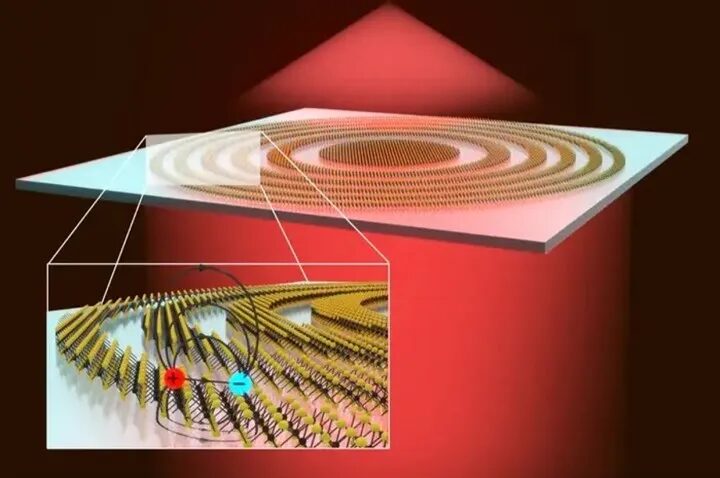Lens technology has advanced significantly, but they often remain too thick for some applications. However, researchers have now achieved the incredible feat of developing a lens only three atoms thick. Designed to collect, bend, and focus light to a specific point, lenses are crucial for correcting vision impairments, magnifying distant objects, and imaging very small objects. Traditional lenses are typically made from curved glass or transparent materials like hydrogels used in contact lenses, which contribute to their thickness. Now, by pushing the boundaries of an old technique, researchers have developed the world’s thinnest lens, just three atoms thick.

The World’s Thinnest Lens
Scientists utilized the Fresnel lens design, first created in the 19th century for lighthouses. A Fresnel lens, known for its ability to collect or disperse light with concentric circles, has a short focal length and uses less material while maintaining the ability to bend light similarly to traditional lenses. Fresnel lenses are thinner, lighter, and cheaper, though they may offer slightly lower image quality compared to traditional lenses.
Pushing the limits of this design, researchers have produced a lens just 0.6 nanometers (nm) thick, equivalent to three atoms or 0.0000006 millimeters. This achievement surpasses the previous record set in 2016 by a lens 6.3 nm thick, making the new lens ten times thinner. The lens consists of concentric rings of tungsten disulfide, which absorb red light and refocus it to a point 1 mm from the surface. Since it selectively focuses red light, other wavelengths pass through unaffected.

Unique Characteristics and Potential Applications
A unique feature of this lens is that while it creates a bright focal point for some of the light passing through, most of the light remains unaffected. This might initially seem like a drawback, but it opens up new possibilities for future technologies. The lens can be used in applications where the image passing through must remain undistorted, making it ideal for wearable augmented reality glasses.
Researchers are now focusing on designing and testing more complex and multifunctional optical coatings that can be electrically adjusted to change their function, such as focusing light. This innovative lens technology not only represents a significant leap forward in optics but also paves the way for advancements in various high-tech applications.

